Building OLAP models with complex schemas is very time-consuming and requires a great deal of effort, especially if your dataset is large and wide. Imagine if you could build your first OLAP model in just a few minutes!
To help you get started quickly with minimum bootstrapping work, Kyvos has introduced a new feature called Quick Data Modeling. This feature allows you to connect to your data source and build an OLAP model quickly, even if you are not an OLAP expert.
What is Quick Data Modeling
Typically, to start building your OLAP model you need to perform the following steps:
- Connect to your data
- Choose business data required for analysis
- Define relationships between datasets
- Design and build your cube
- And finally, create visualizations
This looks like a lot of steps!
Quick data modeling combines the first four steps into a single workflow. A wizard-based interface allows you to select your connection and data to register, and then Kyvos automatically validates your data, creates relationships, and cube design, thereby eliminating the effort and time needed to design the OLAP model.
It’s More Than Just a Guided Modelling
There are several tools in the market today that offer guided data modelling. But, Kyvos’ Quick Data Modeling is not just a guided tour – it is an intelligent workflow-based system that creates a Smart OLAP™ design based on your data. And, that too, very quickly!
Though this feature is extremely helpful for new users, it is equally beneficial for those who are experts in the OLAP domain but want to speed up their work without losing the flexibility to make changes based on their prior knowledge. The system uses its ML-based Smart Recommendation Engine to provide intelligent suggestions at every step through the process. You can review and make changes wherever needed.
Benefits of Quick Data Modeling
Here are some of the key benefits of Quick Data Modeling over the traditional step by step modeling:
- Speed
The end-to-end pipeline from connecting to a large number of data sources to coming up with your intelligent OLAP model could just take a couple of minutes, instead of the hours needed, if performed manually. - Simplicity
An intuitive user interface takes you through all the steps and does all the bootstrapping work in the background, right from identifying the facts and measures to coming up with a recommended OLAP model. This makes it easy to work with complex data models, even if you do not have the technical expertise. - Intelligence
The system auto-detects relationships, auto-validates all objects in a single go, and comes up with a model based on your data profile. Once you get the intelligent design, you can further fine-tune it based on your SLAs.
Wizard-based intuitive interface
To use the Quick Data Modeling feature, perform the following steps:
-
On the Kyvos home page, click Quick Data Modeling and provide a name for your analysis. Kyvos automatically creates all the folders, relationship, and cube with this name.
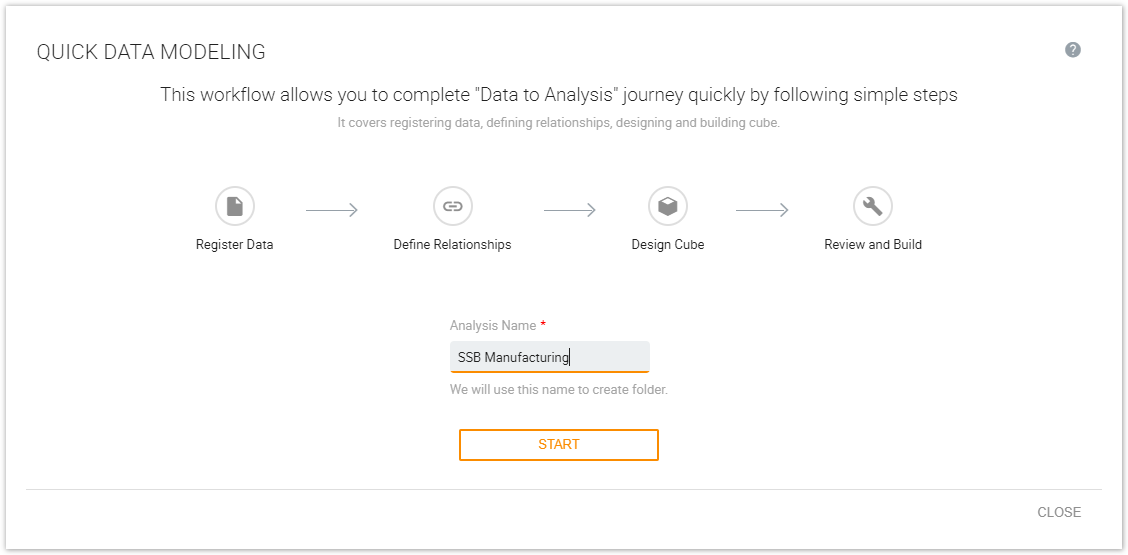
-
Create a connection to your data source on the Register Data tab. You can also connect to multiple data sources here.Once your connection is set, you can add the files or tables on which you want to build your cube. At this step, you can mark your tables as dimensions or facts, filter data and columns from your tables, define column properties, and perform other advanced operations.
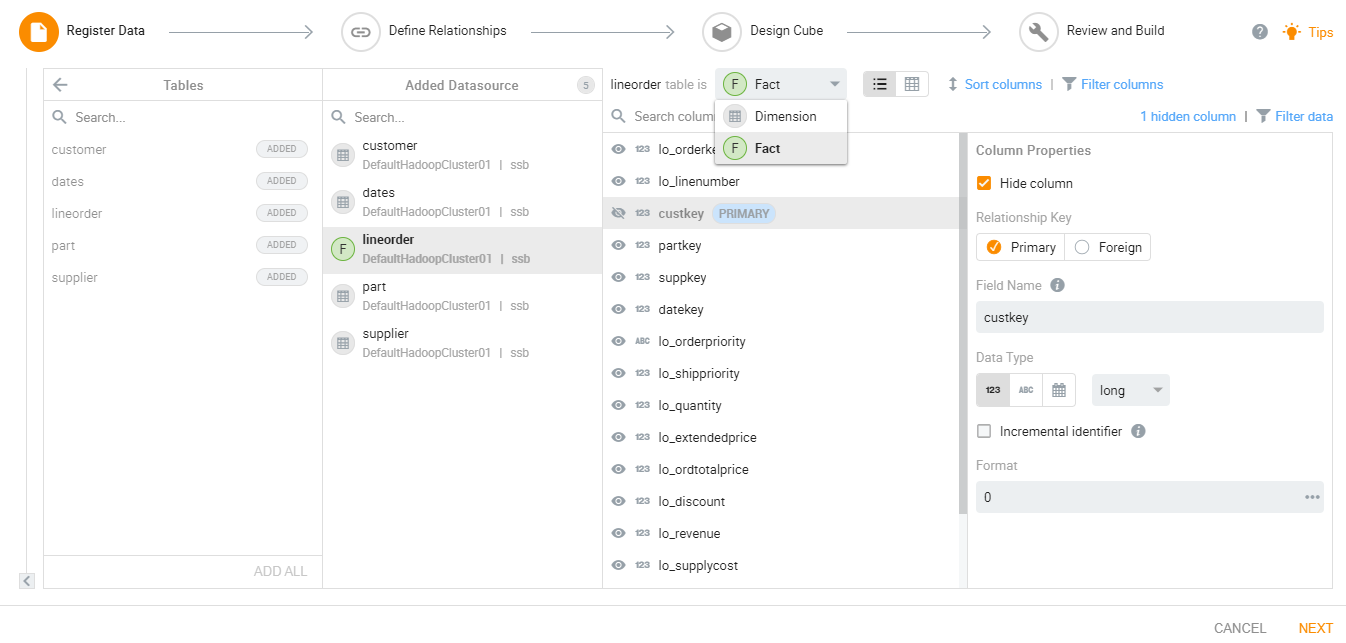
The system validates your files and tables and displays errors if your data is invalid.
-
Once your files are registered, you will see a set of relationships automatically created by the system under the Define Relationships tab. You can also define custom relationships manually here.
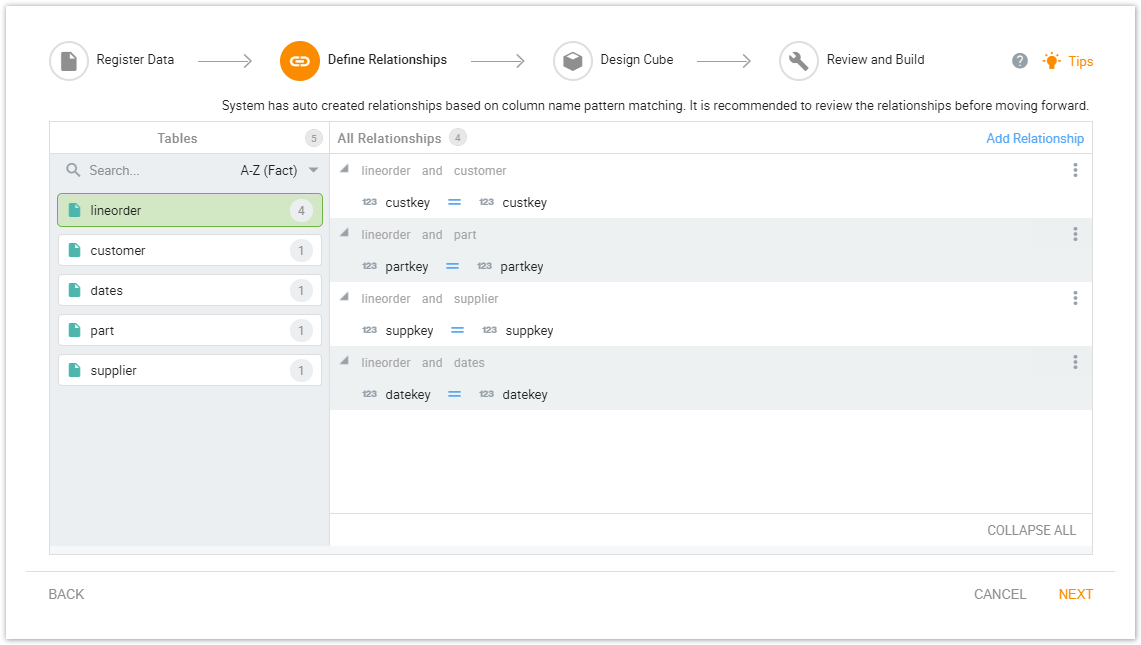
-
Next, the system validates relationships and creates a cube design that is displayed under the Design Cube tab. You can modify the design to add dimensions, measures, or define properties, and more.
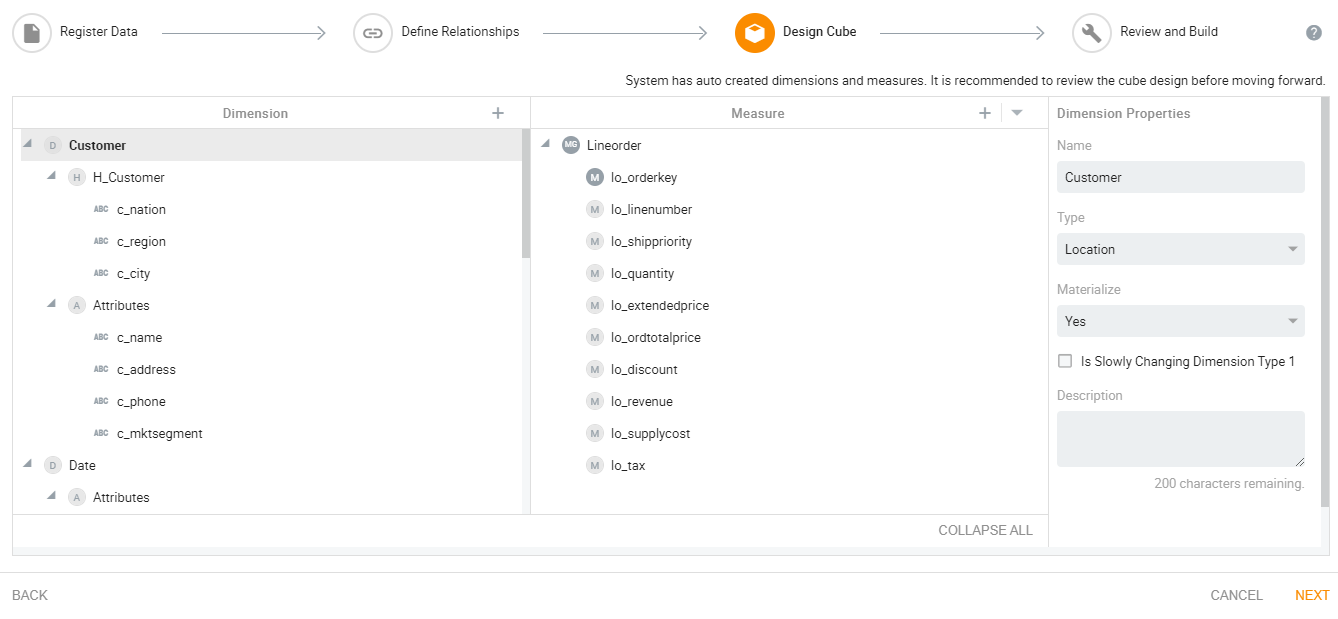
-
Finally, you can execute a test build from the Review and Build tab. Here you can specify the number of records or partitions to be processed in the test build. You can also minimize aggregations if needed.
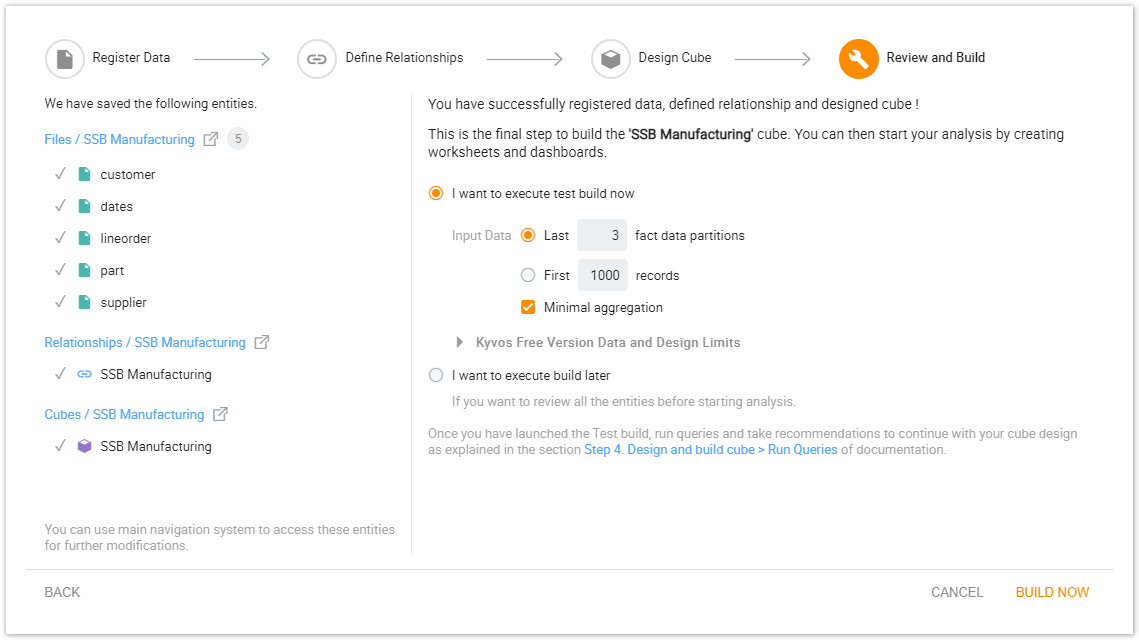
- After the successful completion of your test build, you can create visualizations and start running queries to generate recommendations to further optimize your design.
How to use Quick Data Modeling
Real-world data is often quite complex and so are the business requirements. Hence, optimization is the key to building a successful OLAP model that maintains a balance between the amount of resources needed, the SLA requirements, and the demands of your business users.
Designing an optimized OLAP model needs both intelligence as well as experimentation. The following step will help you leverage system intelligence and user feedback to build a robust OLAP model.
- Initial design
Build first OLAP model using Quick Data Modeling and run a test build. - Training your model
Put it in the hands of business users and allow them to fire queries. - Learning mode
Our Smart Recommendation Engine starts capturing the queries and profiles the data to provide recommendations on optimization options. - Optimization
Apply the recommendations and update your aggregates. The iterative cycle continues, and the system keeps on learning and updating till all the requirements are met.
In the end, you get an optimized OLAP model that can deliver on your SLAs, while ensuring optimal resource utilizations and keeping a check on your costs.
If you want to learn more about Quick Data Modeling for data analysis and other advanced features, request a demo now.

